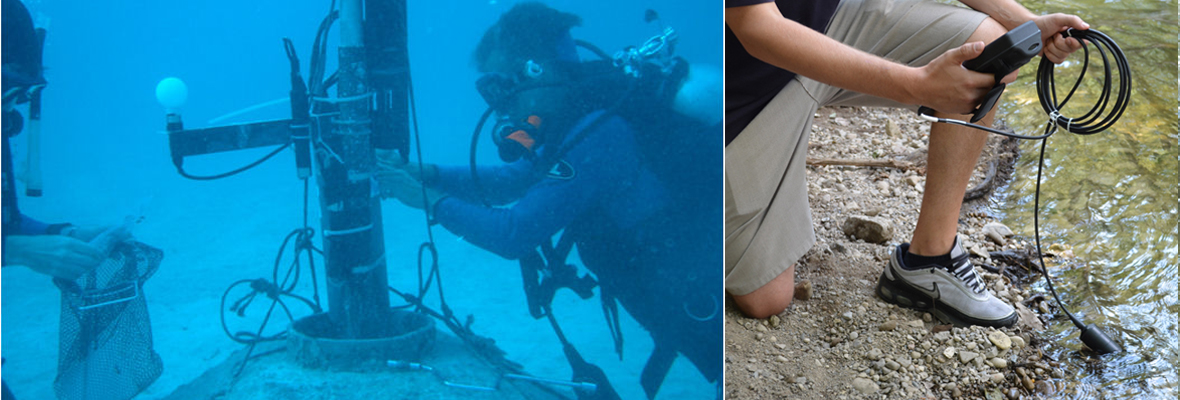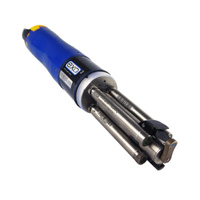Measuring of dissolved oxygen (DO) concentrations is possible using anything from the traditional Winkler titration method to a modern state-of-the-art optical dissolved oxygen sensor. When it comes to precision, accuracy, and more data over more time, these kinds of DO sensors are really the best option.
The best dissolved oxygen sensor to use really depends on the needs of the project, but there are certain themes that ring true for every application that makes some sensors stand out. Whether connected to data loggers for long-term deployment in the field or used in tandem with meters for sampling or laboratory applications, here are examples of some of the best dissolved oxygen sensors, what makes them better for measuring dissolved oxygen, and some thoughts on how to select a DO sensor for your application.
Measuring Dissolved Oxygen With Sensors
Most frequently, dissolved oxygen is measured with an optical DO sensor with a digital output and a data logging system. The data logging system, or in some cases a meter or a water quality sonde, are there to record the data a DO sensor is measuring. A data logging system often provides an advantage because it can compensate for the ways that parameters such as salinity, pressure, and temperature can affect DO concentrations.
Optical dissolved oxygen sensors measure the interactions of luminescent dyes and oxygen in the presence of blue light. More precisely, these sensors measure the partial pressure of DO concentration by determining the luminescence lifetime of the dyes as they react with oxygen and emit light. Oxygen limits the luminescence lifetime or intensity of the light, and this allows the DO level to be calculated.
Optical dissolved oxygen sensors are typically more accurate than are electrochemical DO sensors, especially at very low concentrations. They also remain unaffected by gasses that can impact the efficacy of electrochemical DO sensors. Optical DO sensors also demand less maintenance and warm-up time.
These dissolved oxygen sensors do require moderate amounts of power to function and can be sensitive to temperature. However, a thermistor can correct the data and adjust for temperature automatically for most optical DO sensors.
Best Dissolved Oxygen Sensors
There are numerous possible options on the market when it comes to dissolved oxygen sensors. Here are two of our favorites for a broad range of applications, and why they work so well.
The In-Situ RDO PRO-X optical dissolved oxygen sensor is an excellent choice for rugged environments and demanding applications. This DO sensor is right for this kind of application because it allows you to deploy the latest in modern, luminescent technology but doesn’t draw huge amounts of power. In fact, it demands only 8 to 36 VDC power.
It is stir-independent and insensitive to interference from ammonium, chloride, and hydrogen sulfide. It is capable of custom cable lengths, allowing users to extend to swap sensor cables simply, up to 4,000 feet.
The In-Situ RDO also runs without the use of external controllers or transmitters. It includes integral Modbus RS485, 4-20mA, and SDI-12 signal outputs. Finally, the unit is a snap to configure, with its calibration coefficients part of the sensor’s top. Replace that cap just once a year and avoid bi-monthly membrane replacements.
The verdict: The In-Situ RDO PRO-X is a stable, low-maintenance, accurate option for long-term environmental monitoring. The sensor is pressure-rated to 500 PSI, perfect for deep and highly saline environments. It’s also ideal for municipal process monitoring, multi-point dissolved oxygen profiling, and dam discharge monitoring.
In situations where you can access your system a little more often—up to 90 days between service intervals—the YSI EXO3 Multi-Parameter Water Quality Sonde might be the best option. The EXO3 sonde is designed for monitoring all of the major water quality parameters, including dissolved oxygen. It features biofouling protection and titanium sensors with universal sensor ports that are wet-mateable.
The YSI EXO’s integral SDI-12 communications mean that it works well for data collection applications, such as standard monitoring of natural aquatic environments such as estuaries, groundwater, lakes, oceans, and rivers. With a rugged design and construction, a highly efficient platform for power management, and an anti-fouling system that’s chemistry-free, this unit provides a lot of modern conveniences.
The verdict: with a little more available time and space for maintenance, the YSI EXO’s integral SDI-12 might be ideal for your project. It’s perfect for monitoring water quality parameters, including customized parameters, in all but the most remote water bodies.
Choosing Your Dissolved Oxygen Sensor
Accurate, reliable, real-time dissolved oxygen measurements are well within reach for almost any project. The best sensor technologies make monitoring DO simpler and quicker than ever before, especially using the right tool for the job. Learn more about the range of dissolved oxygen sensors available here, or reach out to the NexSens/Fondriest team about how to choose the right dissolved oxygen sensor for your application.
Equipment
EXO3 is a purpose-built sonde for monitoring major water quality parameters, including: pH, conductivity, temperature, turbidity and dissolved oxygen.
WQData LIVE is a web-based project management service that allows users 24/7 instant access to data collected from remote telemetry systems.
Top image: (left) USEPA Environmental-Protection-Agency [Public domain] (right) Fondriest Environmental




0 comments